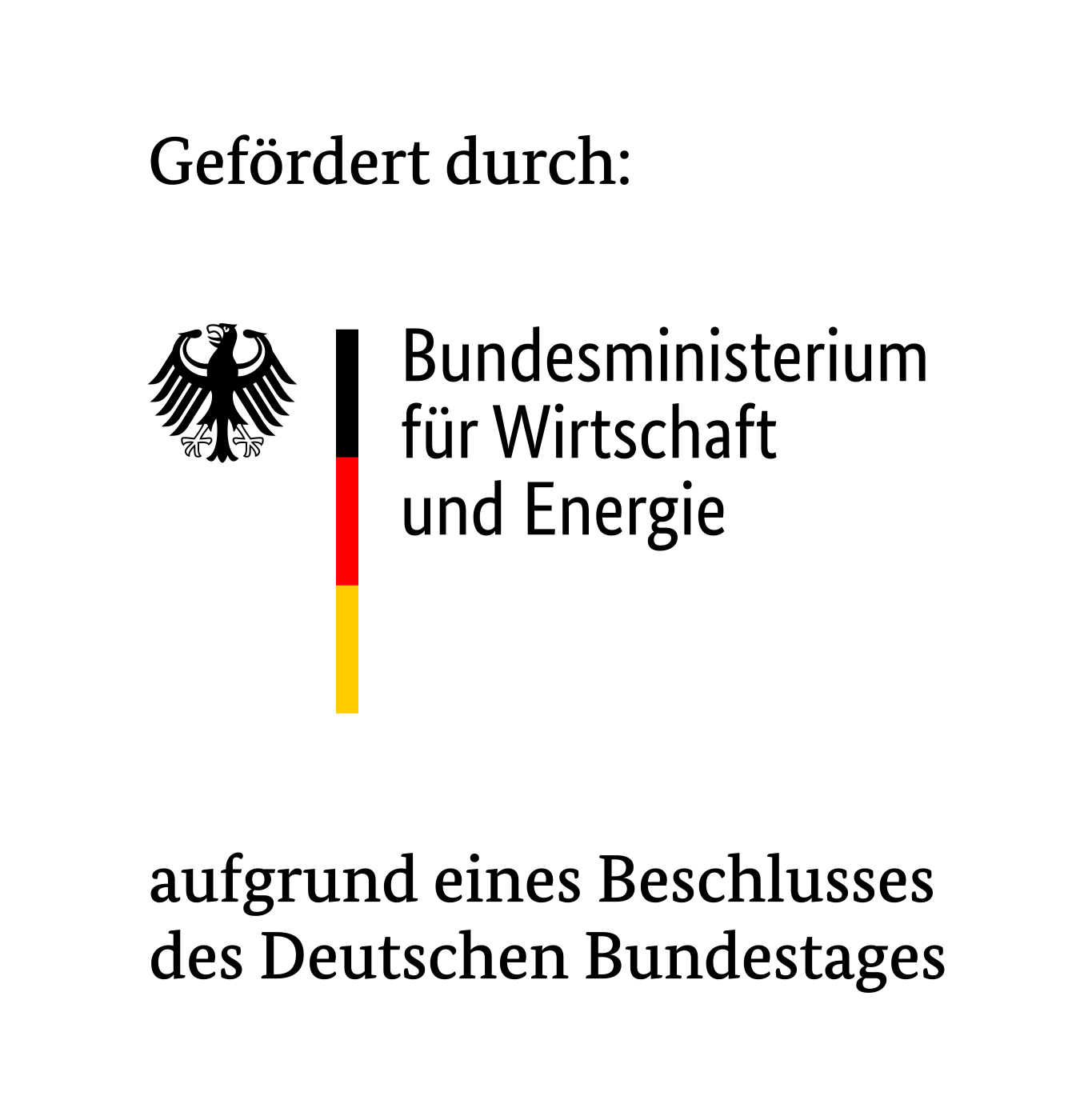
FKZ 03ET6133A
Project Background
Fuel cell systems present an effective means to enhance the degree of flexibility as well as the security of supply with energy in a system based on renewable energy sources. A fuel cell converts the chemical energy contained in elemental hydrogen into electric energy and thermal energy.
![]()
The Achilles’ heel of today’s fuel cells, and for that matter electrolyzers, particularly when it comes to sector coupling, is that reaction kinetics cannot be influenced due to the impossibility to manipulate the membrane. As a result, fuel cells display only a very limited degree of dynamic response to rapid changes in power demand. Moreover, especially in mobile applications higher power densities are essential. For these reasons, the research group for Electrical Power Systems at the Helmut Schmidt University embarks upon new approaches for the internal control of fuel cell systems. The main focus is directed towards a controlled manipulation via electric fields of the transport processes within the membrane. This capacity for an internal control is expected to optimize dynamics of the system and thus its response to rapid changes in power demand.
Project Goal
The goals of this project are modification and improvement of both stationary and dynamic operating behaviour of PEM fuel cells. This is aimed at by the development of an electrically controllable membrane unit for fuel cells. Detailed goals comprise:
-
- Development of a prototype of a controllable fuel cell with modified stationary and dynamic behaviour
- Characterization and optimization of the ability to control a fuel cell as well as development of the particular control method
Methodology
In a first step, novel membrane units with an embedded control grid architecture, a so-called Electric Field Modifier (EFM), will be simulated and analyzed using the software COMSOL Multiphysics® as well as physically manufactured and tested. For characterization purposes, the research group can take advantage of its own fuel cell laboratory with potent test stations.
Results from both theoretical simulation and physical characterization of prototypes will serve as mutual basis for the optimization of either of the two. Subsequently, the optimized prototypes will be subjected to enhanced tests for their dynamics and life time. At the end of the project, a fuel cell stack is envisaged that is built up from the novel electrically controllable membrane units.
Publications
Friedrich, J.
Estimation of the Influence of Novel Control Lattices within Fuel Cell Membranes using a 2D Steady-State Model
Vortrag auf dem Electrochemistry Workshop an der Helmut-Schmidt-Universität / Universität der Bundeswehr Hamburg,
12. – 14. November 2018, Hamburg, Germany
Schumann, M.; Grumm, F.; Friedrich, J.; Schulz, D.
Transient PEM Fuel Cell Control by an Electric Field Modifier
2nd European Conference on Electrical Engineering and Computer Science (EECS 2018), Bern, Switzerland, 20-22 December 2018
Schumann, M.; Grumm, F.; Friedrich, J.; Schulz, D.
Electric Field Modifier Design and Implementation for Transient PEM Fuel Cell Control
WSEAS TRANSACTIONS on CIRCUITS and SYSTEMS, vol. 18, pp. 55-62, 2019, ISSN (Online): 2224-266X
Friedrich, J.; Schumann, M.; Schulz, D.
Effects, Position and Density of Novel Control Lattices for PEM Fuel Cells
7th Eur. Conf. Ren. Energy Sys. 10-12 June 2019, Madrid, Spain
Friedrich, J.; Schumann, M.; Schulz, D.
Manipulating the Current Density and the Transient Behavior of Fuel Cells by novel Electric Field Modifiers
CARISMA 2019, 27-30 August, Duisburg, Germany
Schumann, M.; Friedrich, J.; Kötter, A.; Schulz, D.
Entwicklung von Elektrisch Steuerbaren Membran-Elektroden-Einheiten in PEM Brennstoffzellen zur Verbesserung der Dynamik,
In: Hamburger Beiträge für den technischen Klimaschutz,
Helmut-Schmidt-Universität / Universität der Bundeswehr, Professur für Elektrische Energiesysteme, Hamburg, Oktober 2019,
Bd. 1, S. 111-115, ISSN (Druck) 2698-8798, ISBN (Druck) 978-3-86818-247-7, ISSN (Online) 2698-8801, ISBN (Online) 978-3-86818-248-4
Project Partner
The project StBZuEL – Development and Test of electrically controllable Membrane Units in Polymer Electrolyte Fuel Cells and Electrolyzers with internal Methanation in the Gas Exhaust Pipe – is being pursued in cooperation with Altran Deutschland S.A.S & Co. KG.

Patents
[1] Schulz, D.: Brennstoffzellenmembraneinheit, steuerbare Brennstoffzelle und Hochdruckelektrolysezelle, 15.12.2011, Patent DE 10 2011 088 613
[2] Schulz, D.: INTERNALLY CONTROLLABLE FUEL CELL, United States Patent, Patent No.: US 9,437,887 B2, Sep.6, 2016
[3] Schulz, D.: INTERNALLY CONTROLLABLE FUEL CELL, European patent No. 2791392, 16.08.2017
[4] Schulz, D.: INTERNALLY CONTROLLABLE FUEL CELL, Chinese patent, Patent No.: ZL2012800617937, 6.12.2017
[5] Schulz, D.: HIGH EFFICIENCY FUEL CELL, European patent No. 2978875, 07.03.18
[6] Schulz, D.: HIGH EFFICIENCY FUEL CELL, Chinese patent, Patent No.: ZL 2014800178483, 22.06.2018
[7] Schulz, D.: HIGH EFFICIENCY FUEL CELL, United States Patent, Patent No.: US 1050235506 B2, Jul. 17, 2018
[8] Schulz, D.: HIGH EFFICIENCY FUEL CELL, Japanese Patent Number 6462660, 11.01.2019
[9] Schulz, D.: INTERNALLY CONTROLLABLE FUEL CELL, Japanese Patent Number 8486105, 01.03.2019
[10] Schulz, D.: INTERNALLY CONTROLLABLE FUEL CELL, Korean Patent Number 10-2001703, 12.07.2019
Contact
Prof. Dr.-Ing. habil. Detlef Schulz (project lead)
Marc Schumann, M.Sc.
Carsten Cosse, M.Sc.
Faculty for Electrical Engineering
Electrical Power Systems
Letzte Änderung: 28. May 2021
